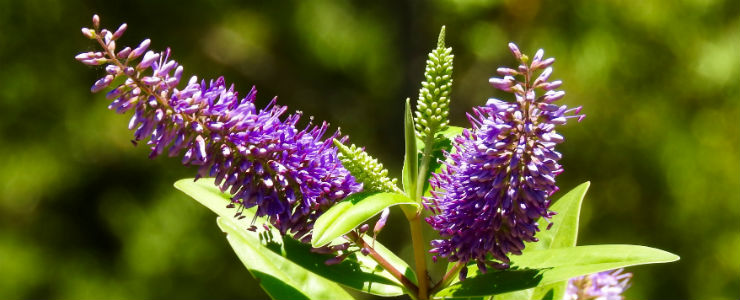Recurring Events
There's always something to do at the Arboretum.
Take part in one of the following recurring events or check the Arb's list of recurring events for the latest happenings.
The first Saturday of every month: Guided tour of the gardens
The first Tuesday of every month: Community Day, admission is free to all visitors
Every week, volunteer gardening and weeding. See the Volunteer page.
Annual participation in SOD Blitz: May 17-20, 2024 (see below)
Sudden Oak Death (SOD) Blitz – Calling all volunteers and citizen scientists!
May 17 - 20, 2024
SOD Blitz Station located at the entrance of the UC Santa Cruz Arboretum & Botanic Garden
Arboretum Road, Santa Cruz, CA 95064
The UC Santa Cruz Arboretum and Botanic Garden will be serving as one of many SOD Blitz stations throughout California this spring on May 17th through May 20th. You can come by the Arboretum during open hours (9:00am - 5:00pm) to participate in this citizen science project that will help to serve and sustain our community. Training and registration can be done online through the link above. We encourage all that are interested from our Santa Cruz community and beyond to come and explore the Arboretum this spring and help gather data that will help map SOD in our county. We provide everything needed to participate except for the phone. SOD is a big issue for California and participation will give volunteers the opportunity to be field biologists and enjoy the outdoors! The data will be published on the SODmap and is critical to assist landowners or managers to create management plans going forward. The station with collection packets will be at the Arboretum front gate on High St (120 Arboretum Road) CA 95064. Location: Google Map LINK and coordinates. 36°58’55.1″N 122°03’40.8″W. Please feel free to contact Liz Rennie – erennie@ucsc.edu and Jeremy Silberman – jfsilber@ucsc.edu should you have any questions. We hope to see you in May!
SOD BLITZ PROJECT INTRODUCTION
Sudden Oak Death (SOD), a serious exotic disease, is threatening the survival of tanoak and several oak species in California. Currently SOD is found in the wildlands of 14 coastal California counties, from Monterey to Humboldt. While patchy in distribution, with each passing year, the swath of infection continues to become more contiguous. Researchers have discovered that Phytophthora ramorum, the pathogen that causes SOD, spreads most often on infected California bay laurel leaves. Symptomatic bay leaves are often the first sign that SOD has arrived at a location, and generally precedes oak infections. Some management options are available (sanitation, chemical preventative treatments, bay removal), but they are effective only if implemented before oaks and tanoaks are infected; hence, timely detection of the disease on bay laurel leaves is key for a successful proactive attempt to slow down the SOD epidemic.
WHAT IS A SOD BLITZ?
SOD-blitzes inform and educate the community about Sudden Oak Death, get locals involved in detecting the disease, and produce detailed local maps of disease distribution. The map can then be used to identify those areas where the infestation may be mild enough to justify proactive management.
HOW CAN I PARTICIPATE IN MY COMMUNITY?
Connect with your local survey effort and follow the training online.
HOW ARE SOD BLITZES STRUCTURED?
1. Sign up and complete the training online before the date of your local survey.
The goals of the trainings are:
- Familiarize yourself with Sudden Oak Death
- Learn how to identify SOD symptoms on bay and tanoak leaves
- Learn how to collect leaves and fill out collection forms
- Lean how to correctly store, transport, and turn in samples
- Safety reminders
2. Pick up survey materials at your local SOD Blitz station before going to the field.
3. Pick up and return times may vary but they are usually between Saturday and Tuesday. Leaf samples are collected by the individual participants. Samples and accompanying forms are then turned in at the SOD Blitz station Saturday to Tuesday.
4. The UC Berkeley diagnostic laboratory will analyze each collected sample through microscopic and DNA analyses to determine the presence or absence of P. ramorum/Sudden Oak Death. Once all samples have been tested, a map will be generated highlighting the areas sampled, and the presence or absence of the disease at each location.
5. One to four months later (dependent upon workload and number of samples collected) a follow-up community meeting may be organized. At the meeting, results will be presented, and management options discussed.

